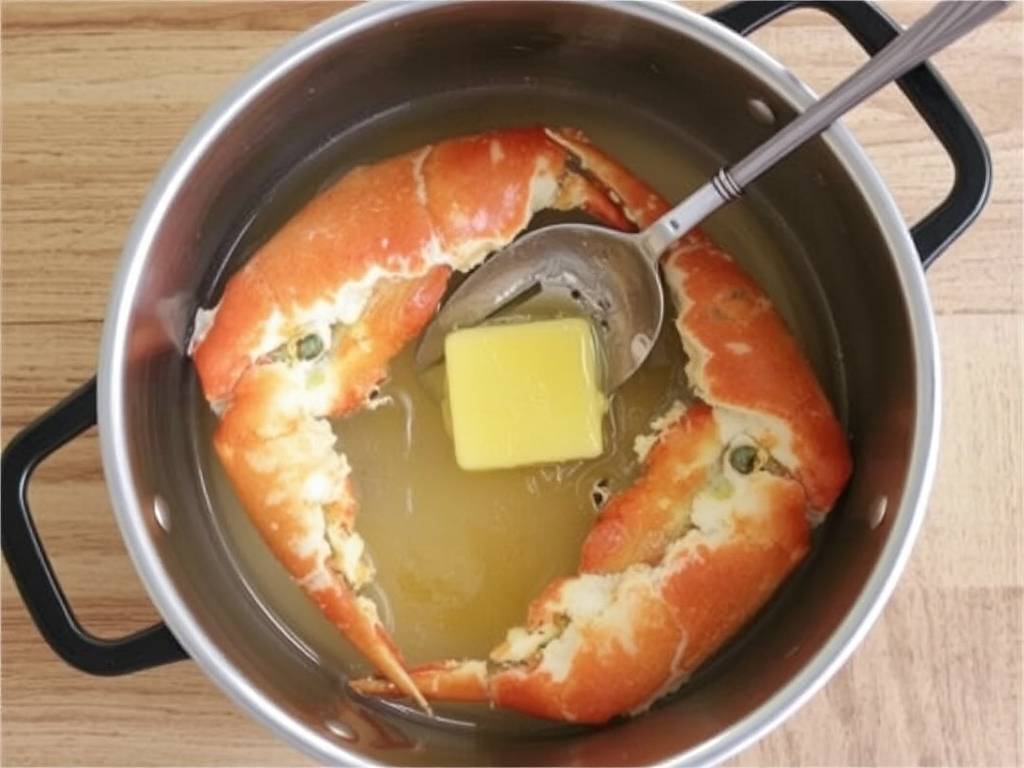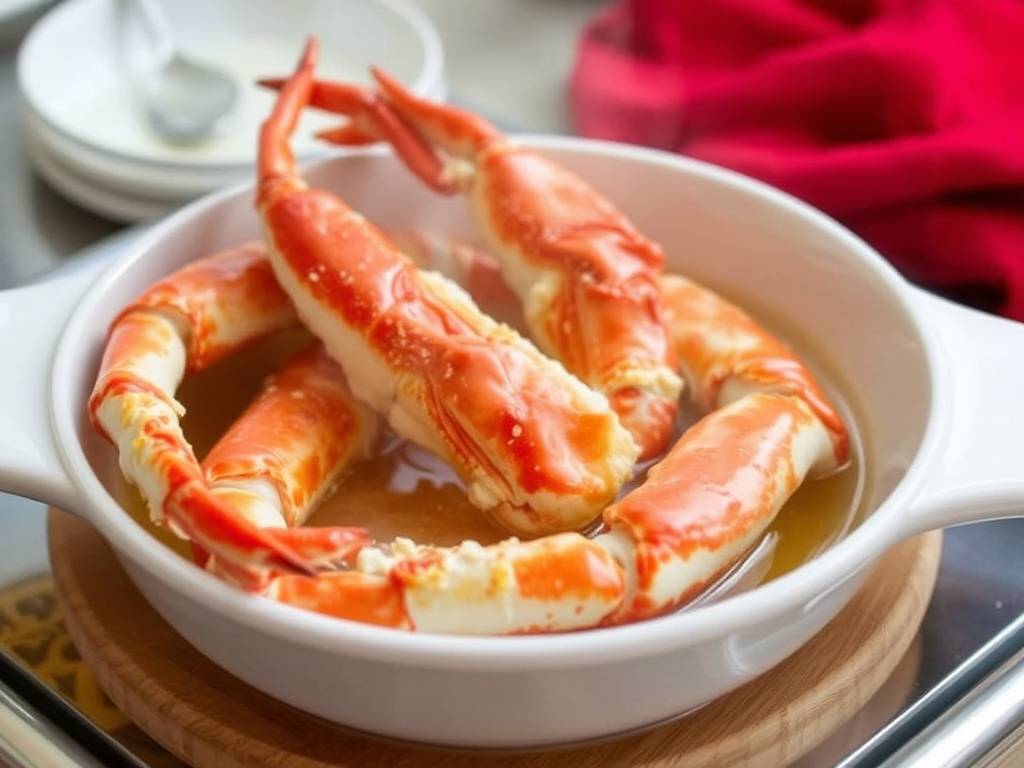The Ultimate Guide to Perfectly Steamed Crab Legs with Butter
There's something truly magical about a platter of steaming crab legs, their pink and white shells glistening, ready to be cracked open to reveal the sweet, succulent meat inside. For many, the thought of cooking crab legs at home can seem daunting. Questions swirl: "How long do I steam them?" "What's the best butter sauce?" "How do I even eat these things without making a mess?" Fear not! This comprehensive guide is designed to walk you through every single step, transforming you from a curious cook into a master of steamed crab legs. We'll cover everything from selecting the finest crab legs to crafting the perfect dipping butter, ensuring your seafood feast is nothing short of spectacular.

Let's start at the very beginning: the crab legs themselves. You'll most commonly find two types at your local grocery store or fish market: snow crab legs and king crab legs. Snow crab legs are thinner, with a more delicate and slightly briny flavor. They are typically sold in clusters, which makes them a more budget-friendly option. King crab legs, on the other hand, are the giants of the crab world. They are massive, with thick shells packed with firm, sweet, and incredibly flavorful meat. Your choice depends on your occasion and budget, but both are exceptional when steamed with butter.

A crucial point to remember is that almost all crab legs sold in stores are pre-cooked before they are frozen. This is a huge advantage for the home cook! Our goal in steaming is not to "cook" the crab in the traditional sense, but to thaw it and heat it through gently. Gentle heating is the secret to preserving that delicate, juicy texture. Overcooking is the enemy of good crab, as it can make the meat rubbery and tough. Steaming is the ideal method because it uses moist heat to warm the crab evenly without leaching out its natural flavors or boiling them away into the water.
Gathering Your Tools and Ingredients
Before we fire up the stove, let's get organized. You don't need a professional kitchen to pull this off. Here’s what you’ll need:
- Crab Legs: Plan for about 1 to 1.5 pounds per person. Thawing them overnight in the refrigerator is best, but if you're short on time, you can run them under cold water for a few minutes. Avoid using warm water, as it can start to cook the meat unevenly.
- A Large Pot with a Steamer Basket: This is your most important piece of equipment. The pot needs to be large enough to hold your crab legs without overcrowding, and the steamer basket should keep them elevated above the water.
- Water or Flavorful Broth: Plain water works perfectly, but for an extra layer of flavor, consider using a seafood stock or even adding a bottle of light beer to the steaming liquid. You can also toss in some lemon slices, bay leaves, or a tablespoon of Old Bay seasoning into the water.
- The Star of the Show: The Butter Sauce. This is where you can get creative. You'll need:
- 1 cup (2 sticks) of high-quality unsalted butter
- 2-3 cloves of garlic, minced
- 1 tablespoon of fresh lemon juice
- 1 teaspoon of chopped fresh parsley
- A pinch of salt (to taste, since the crab is often already salted)
- Optional additions: a dash of hot sauce, a sprinkle of paprika, or some freshly cracked black pepper.
The Steaming Process: A Step-by-Step Guide
Now for the main event. Follow these steps for foolproof, perfectly steamed crab legs every single time.
- Prepare the Pot: Pour about 1-2 inches of your chosen liquid (water, broth, or beer) into the bottom of your large pot. Make sure the water level is below the bottom of the steamer basket. You want to steam the crab, not boil it.
- Bring to a Boil: Place the pot over high heat and bring the liquid to a rolling boil. You should see vigorous steam rising.
- Arrange the Crab Legs: Once boiling, carefully place your crab leg clusters into the steamer basket. If they are too long, it's okay to bend them or break them at the joints to fit. The key is to arrange them in a single layer if possible, so the steam can circulate evenly. If you have a lot, you may need to steam in batches.
- Cover and Steam: Clamp the lid on tightly. This traps the steam, which is what does all the work. The steaming time is surprisingly short:
- For thawed snow crab or king crab legs: Steam for 4-6 minutes. You're just heating them until they are hot all the way through.
- For frozen crab legs: Steam for 6-10 minutes. The extra time is needed to thaw and heat the frozen meat.
- Check for Doneness: The best way to tell if your crab legs are ready is to use a pair of tongs to pull one out. The shells will turn a vibrant orange-red color and be hot to the touch. The meat inside should be opaque, white, and steaming hot. Be careful not to oversteam!
Crafting the Perfect Drawn Butter Dipping Sauce
While the crab is steaming, you have the perfect window to make your legendary butter sauce. This isn't just melted butter; it's "drawn butter," which is clarified and infused with flavor.
- Melt the Butter: In a small saucepan over low heat, melt the two sticks of unsalted butter slowly. We're using low heat to prevent the milk solids from burning.
- Infuse with Flavor: Once the butter is melted, add the minced garlic. Let it simmer gently for 2-3 minutes. You'll smell that incredible, aromatic garlic fragrance. Be careful not to burn the garlic, as it will turn bitter.
- Finish the Sauce: Remove the saucepan from the heat. Stir in the fresh lemon juice, chopped parsley, and a pinch of salt. The lemon juice cuts through the richness of the butter beautifully and enhances the sweetness of the crab. This is the perfect garlic butter sauce for seafood that will elevate your meal immensely.
The Art of Cracking and Eating Crab Legs
You have your steaming hot crab and your glorious butter sauce. Now what? Cracking crab legs can be an adventure, but with a few tips, it's easy and fun.
- Tools: You can use specialized crab crackers, a nutcracker, or even a pair of kitchen shears. Some people even use the back of a heavy spoon.
- The Technique: For snow crab legs, simply twist the legs at the joints to separate them. Then, crack the shell of each segment by applying pressure with your cracker. Use a pick or a small fork to pull out the long, beautiful strands of meat.
- For king crab legs, the shells are much tougher. Use a heavy cracker or kitchen shears to make a long cut along the length of the shell. Then, you can simply peel the shell back to reveal the massive, intact piece of crab meat inside. It’s incredibly satisfying!
- The Best Part: Dip that gorgeous, hot crab meat directly into the warm garlic butter sauce. Enjoy the burst of sweet, savory, and rich flavors. Don't forget the lemon wedges for an extra squeeze of brightness!
Serving Suggestions and Leftovers
A feast of steamed crab legs with butter is a meal to remember. Serve it family-style on a large platter lined with newspaper or lemon slices for a classic, rustic feel. This is a hands-on, communal meal, so provide plenty of napkins and small bowls for the butter sauce for each guest.
For side dishes, keep things simple to let the crab be the star. A fresh green salad, roasted asparagus, or classic easy garlic butter corn on the cob are fantastic pairings. A crusty baguette is also essential for sopping up any leftover butter sauce—trust me, you won't want to waste a drop.
If you happen to have any leftovers (a rare occurrence!), you are in for a treat. Pick any remaining meat from the shells and store it in an airtight container in the refrigerator for up to 2 days. This leftover crab meat is perfect for making quick and easy crab cakes, tossing into a pasta dish, or piling high on a gourmet crab salad sandwich.
From selecting the right type of crab to mastering the steaming technique and creating a divine butter dip, you now possess all the knowledge needed to create an unforgettable seafood dinner at home. So, don your apron, grab your pot, and get ready to steam the most delicious crab legs of your life. Happy cooking






发表评论